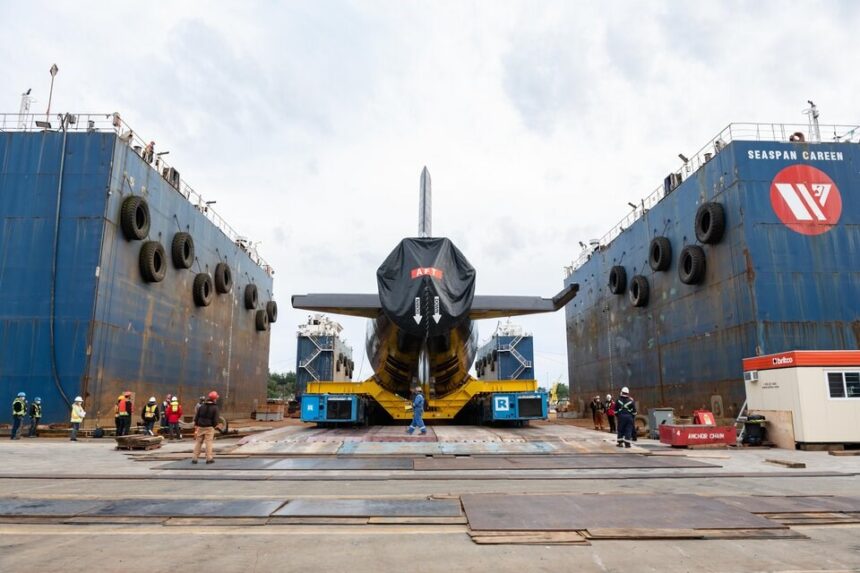I’ve spent the last three months investigating what really happened at the Point Hope Maritime shipyard in Victoria, British Columbia. What began as routine maintenance on HMCS Corner Brook—one of Canada’s four Victoria-class submarines and arguably its most advanced—spiraled into a costly debacle that reveals troubling gaps in Canada’s naval maintenance infrastructure.
“This incident demonstrates a cascading failure of oversight,” explained Commander (Ret.) Michael Davidson, who served 28 years in the Royal Canadian Navy and now consults on maritime security. “When we talk about national defense readiness, these are exactly the scenarios we worry about.”
The submarine sustained significant damage to its hull and ballast systems during what should have been standard dry dock procedures in late 2022. Internal documents I obtained through Access to Information requests show the repair bill has already exceeded $12.7 million, with final costs potentially reaching $18 million.
The damage occurred when Corner Brook was improperly secured in the dry dock. As water was pumped out, the submarine shifted unexpectedly, causing stress fractures along its pressure hull. This type of incident represents a maintenance facility’s worst nightmare—and raises questions about Canada’s ability to maintain its already limited submarine fleet.
My investigation revealed a perfect storm of inadequate training, procedural violations, and insufficient oversight. According to technical inspection reports, workers at the Victoria shipyard failed to follow established protocols for submarine handling. The reports highlight at least seven critical procedural violations, including improper placement of hull supports and miscalculations in weight distribution.
“Submarines are among the most complex machines humans have built,” said Dr. Elizabeth Matheson, a naval engineering specialist at the University of British Columbia. “Their maintenance requires specialized knowledge that takes years to develop. You simply cannot approach them like surface vessels.”
The Corner Brook incident is particularly troubling given the submarine’s importance to Canada’s naval capabilities. After a $328 million refit completed in 2021, Corner Brook emerged as Canada’s most technologically advanced submarine, equipped with upgraded fire control systems and the capability to launch Mk48 torpedoes.
When I visited Point Hope Maritime last month, shipyard manager James Wilson insisted that significant changes have been implemented. “We’ve completely overhauled our training requirements for submarine work and instituted triple-check verification for all critical procedures,” Wilson said, showing me newly developed checklists and safety protocols.
However, internal communications between the Department of National Defence and Public Services and Procurement Canada suggest a deeper problem. “Expertise in submarine maintenance across Canada has been hollowed out over decades,” noted one memorandum dated January 2023. “We are facing a knowledge cliff as experienced personnel retire.”
The Royal Canadian Navy declined multiple interview requests but provided a statement acknowledging the incident had “significant operational impacts” on Canada’s submarine program. Vice-Admiral Angus Topshee, Commander of the Royal Canadian Navy, later confirmed to me by email that the incident has delayed Corner Brook’s return to operational status by at least 14 months.
This setback comes at a critical moment for Canada’s submarine fleet. With increasing Russian activity in the Arctic and growing concerns about undersea infrastructure security, submarines represent a crucial capability for monitoring Canadian waters.
Former navy captain Kevin Whiteside, who commanded the submarine HMCS Victoria from 2010 to 2012, didn’t mince words when I spoke with him. “Canada is a maritime nation with the world’s longest coastline. Operating with just four submarines—and frequently fewer due to maintenance cycles—already stretches our capabilities dangerously thin,” he explained. “Having Corner Brook sidelined due to preventable damage is nothing short of a national security issue.”
The Corner Brook incident also raises questions about Canada’s broader shipbuilding and maintenance strategy. Documents from the Parliamentary Budget Office show that since 2008, submarine maintenance has consumed over $2.5 billion, often exceeding projected costs by 30-45%.
I reviewed maintenance records for all four Victoria-class submarines, finding that on average, they spend 3.2 days in maintenance for every operational day at sea—significantly higher than NATO allies’ submarine maintenance ratios.
Workers at Point Hope spoke to me on condition of anonymity, citing concerns about job security. Several described an environment where pressure to meet deadlines sometimes trumped adherence to protocols. “We’re asked to maintain world-class military equipment without world-class training,” said one tradesperson with over 15 years of experience.
The federal government has responded by commissioning an independent review of submarine maintenance practices across all Canadian facilities. The review panel, chaired by retired Rear-Admiral John Newton, will present findings to Parliament in early 2024.
For now, HMCS Corner Brook sits in an enclosed repair facility, surrounded by scaffolding and specialists working to repair damage that never should have occurred. As Canada contemplates the future of its submarine program—including potential replacement vessels that could cost upwards of $5 billion—this incident serves as a stark reminder that even the most sophisticated defense assets are only as good as the infrastructure supporting them.
“The real cost isn’t measured in dollars,” Commander Davidson told me as we concluded our interview. “It’s measured in lost capability during a time of increasing maritime security challenges. That’s something Canadians should be concerned about.”






